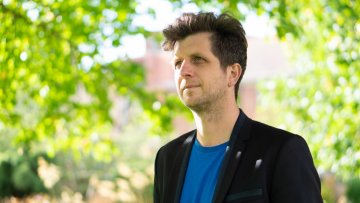Orchestra of the Age of Enlightenment and Tim Harford - Schooled by Randomness
Oxford Mathematics in partnership with Orchestra of the Age of Enlightenment: Bach, the Universe & Everything
Schooled by Randomness
Sunday 30 January 2022, 5:30-6.30pm
Mathematical Institute, Woodstock Road, OX2 6GG
The Science: Tim Harford
There’s been a mistake. The venue has provided the wrong piano. The black notes are sticking, the white notes are out of tune, the pedals don’t work and the instrument itself is just too small. What do you do? Tim Harford talks about how random obstacles and frustrations can inspire us to be more creative.
The Music: J.S. Bach
BWV 81 Jesus schläft, was soll ich hoffen? (Jesus sleeps, what shall I hope for?). Today’s cantata draws upon those moments in life when confusing and random obstacles in our path make us fear for the future and we need to be shown a way out.
Bach, the Universe & Everything is a collaborative music and maths event between Orchestra of the Age of Enlightenment and Oxford Mathematics. Through a series of thought-provoking Bach cantatas, readings and talks from leading Oxford thinkers, we seek to create a community similar to the one that Bach enjoyed in Leipzig until 1750.



